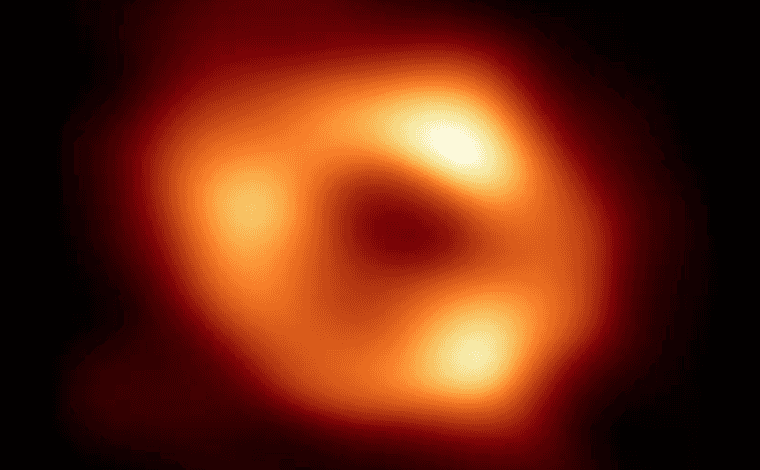For the first time, scientists from around the world have captured a photo of the massive black hole that is 4 million times larger than the sun sitting in the center of the Milky Way Galaxy.
Released by NASA on Thursday, the photo features the black hole called Sagittarius A* surrounded by a bright orange and yellow ring. It is impossible to see a black hole directly, but they are detectable because their boundaries cast a shadow against hot gas and dust.

The image was captured using the Event Horizon Telescope, or EHT, which is made up of 11 radio telescopes dispersed throughout the world from Hawaii to Greenland. The telescopes are connected to a single array, which can detect radio waves moving near the black hole.
The Earth’s rotation allows each telescope to see the same location from different angles simultaneously. Supercomputers based in Europe and the United States then analyze the data and combine them into a single photo.
“The Event Horizon Telescope has captured yet another remarkable image, this time of the giant black hole at the center of our own home galaxy,” said NASA Administrator Bill Nelson. “Looking more comprehensively at this black hole will help us learn more about its cosmic effects on its environment, and exemplifies the international collaboration that will carry us into the future and reveal discoveries we could never have imagined.”
The effort to capture the image began over 20 years ago with two potential targets: Sagittarius A* and another black hole called Messier 87, which sits at the center of a galaxy millions of light-years from Earth.
“Seeing is believing, and this moment of finally seeing something that was always just a fantasy or an idea or model, it’s just such an amazing, captivating moment,” said Heino Falcke, a radio astronomy professor at the Netherlands’ Radboud University Nijmegen, according to The Wall Street Journal.
“Imaging Sagittarius A* took an entire planet,” said Dr. Vincent Fish, a research scientist at MIT Haystack Observatory.
University of Arizona astrophysicist Feryal Ozel said those two black holes were the only ones close enough to be observed from Earth.
“Back as early as 2000, we had identified these two black holes as the ideal targets for an imaging experiment,” Dr. Özel said. “They are both big enough in the sky that a global array could resolve the features that we were interested in.”
The first image ever captured of a black hole – Messier 87 – occurred in April 2019.
“It is quite active and so bright,” said Geraint Lewis, an astrophysics professor at the Sydney Institute of Astronomy said, of Messier 87. “Sagittarius A* is relatively quiescent, and so M87 made a better target.”
Dr. Özel said the researchers involved in the project hope to determine how the black hole’s environment changes year over year. Before 2019, there was no direct evidence of a black hole.



